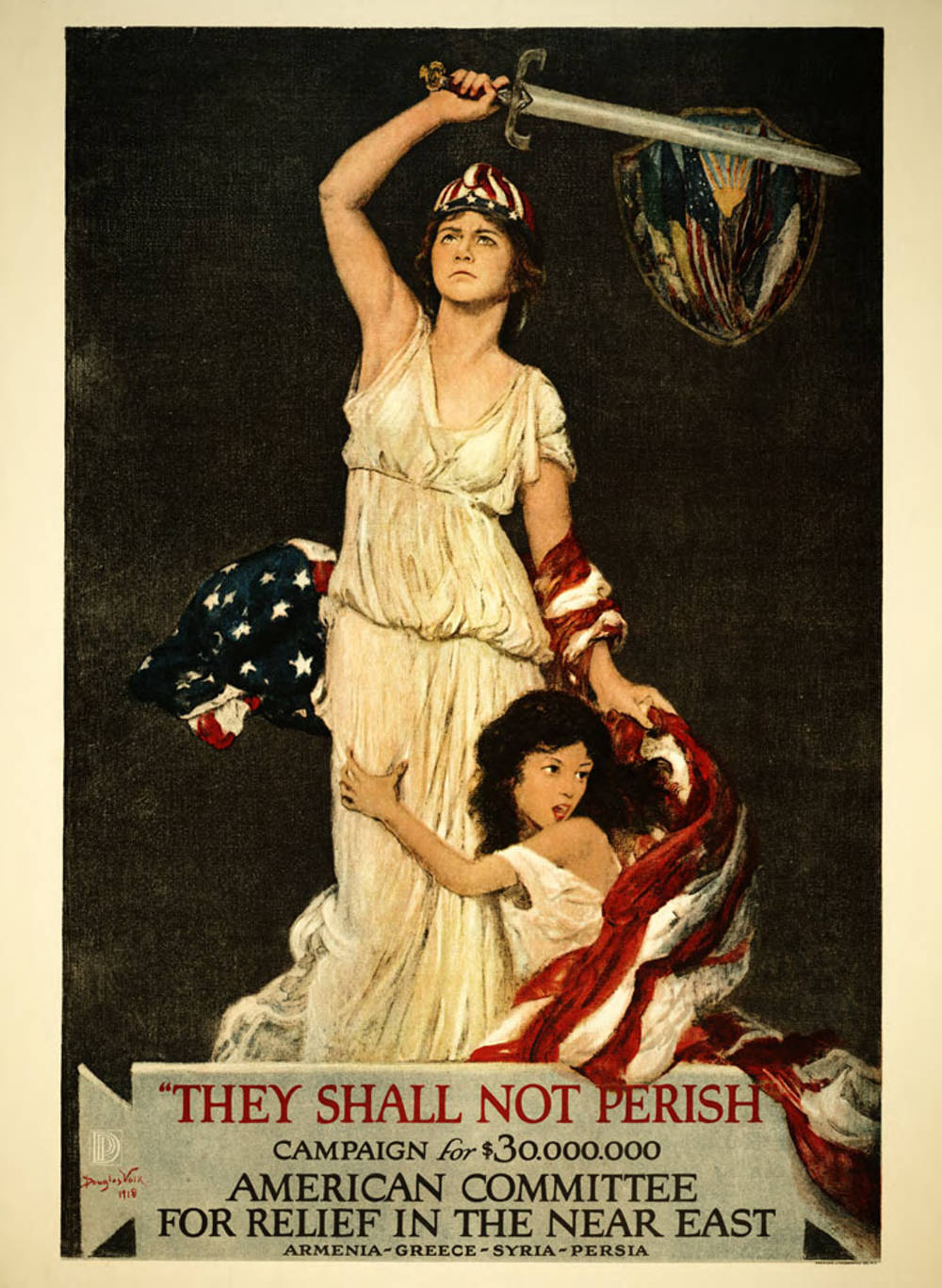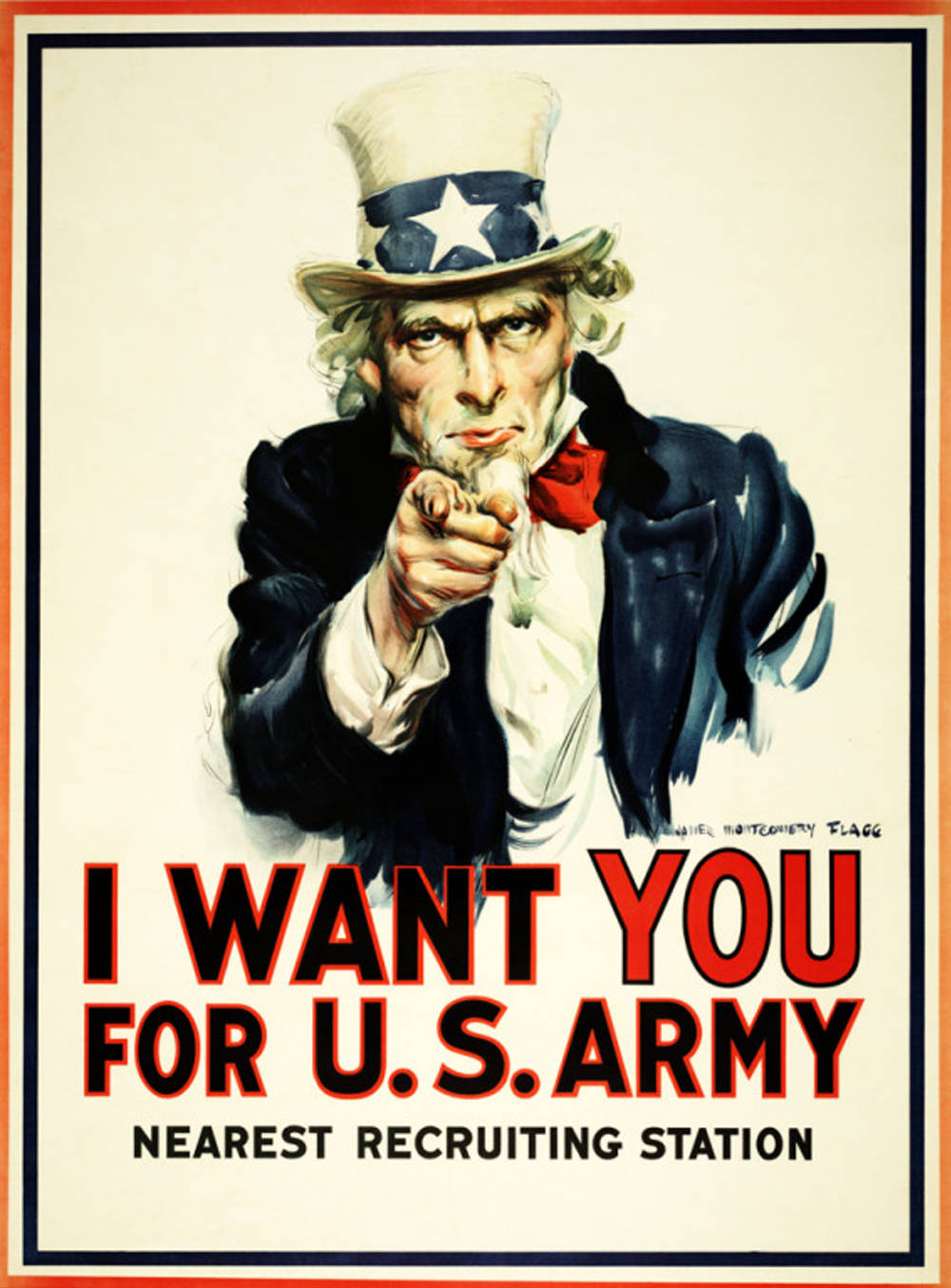American Icons of the Great War
Drawn exclusively from the Pritzker Military Museum & Library’s extensive collections of posters and other printed material, the six-part, 27-image exhibition tells the story of the role that art and artists played in persuading everyone in America, not only the men in uniform, to join the fight for victory.
Introduction
World War I was the first American conflict in which the government made extensive use of images, in the form of posters, placards, and other materials, to recruit troops and rally home support for the war effort.

American Library Association
In 1917, as the United States mobilized for war, the American Library Association (ALA) identified the need for libraries on training bases.

Hey Fellows!
The American Library Association collaborated with seven other organizations to raise money to help troops.

Knowledge Wins
The American Library Association created occupational reading lists for soldiers returning to civilian life.

Load Him Up Again!
Created by Charles B. Falls, this image became the symbol of the American Library Association book drives.

We Want Books
The Library War Service provided United States servicemen with books during World War I.

Yanks in Germany Want More Books
The Library War Service built the American Library in Paris during World War I.

Christy Girl
Born in Progressive Era United States, the “Christy Girl” represented the ideal “New Woman” at the turn of the twentieth century.

I Want You for the Navy
Howard Chandler Christy envisioned young women of the early twentieth century in an idealized way.

Columbia
The Romanesque goddess known as Columbia personifies America in popular culture.
Americans All!
During World War I, half a million immigrants of forty-six different nationalities were drafted into United States military service.

Clear the Way!!
In the artistic hands of Howard Chandler Christy, Columbia takes on the stylized form of the “Christy Girl”.

The Navy Needs You!
The Mayor’s Committee on National Defense was a mostly volunteer organization whose mission was to aid the city of New York in any war related activities.

Columbia Calls

They Shall Not Perish
The American Committee for Relief in the Near East raised funds and supported aid to peoples devastated by the conflicts in the Ottoman Empire before, during, and briefly after World War I.

Doughboy
By 1917, the image of the doughboy was well known even if the nickname was not yet in widespread use.
Our Regular Divisions
The American Expeditionary Force in World War I consisted of the Regular Army, the National Army, and the National Guard

Civilians
Organized in response to World War I (1914-1918), the Jewish Welfare Board enlisted rabbis to serve as chaplains, created an abridged prayer book, and reconciled the various sects of Judaism for service in the military.

And They Thought We Couldn’t Fight
Propaganda for the Victory Liberty Loan stated the money was to be used to bring the soldiers home and take care of them upon return.

Uncle Sam

I Want YOU For the U.S. Army
The "I Want YOU for the U.S. Army" poster features the world’s most well-known physical representation of Uncle Sam.

BEWARE of the Wrath of a Patient Man!
The War Savings Stamps and Liberty Bond campaigns asked people to promise to buy a certain number of bonds over time.

Side By Side – Britannia!
This James Montogomery Flagg poster depicts Uncle Sam with Britannia, a quasi-mythical female personification of Britain.
BOYS and GIRLS
At the cost of only 25¢, War Savings Stamps were designed to encourage children and the poor to contribute to the war effort.




















